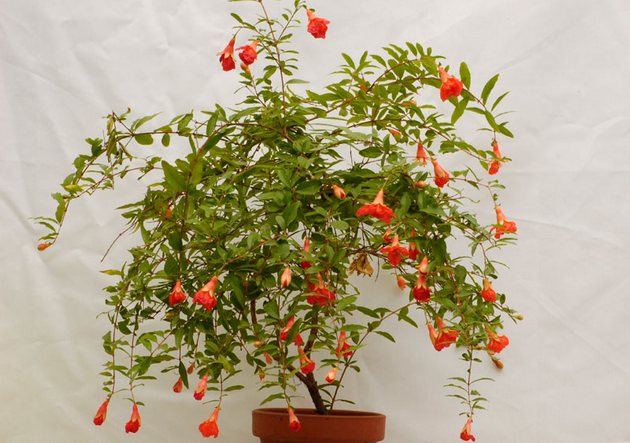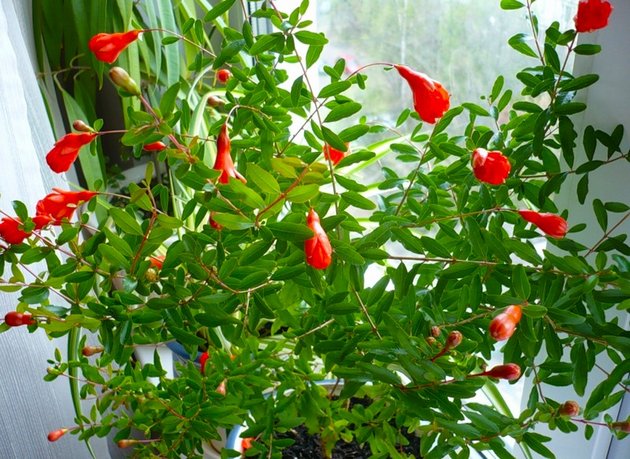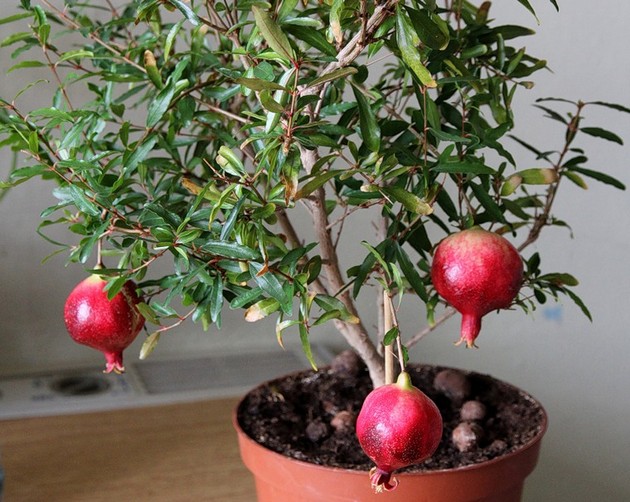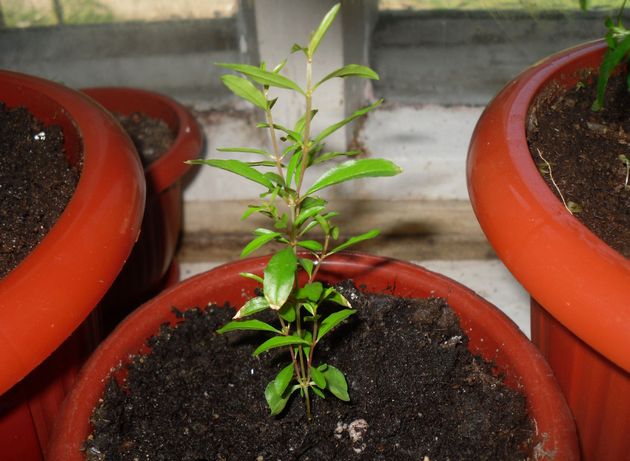This plant is simple and not demanding to care for, and feels good in our apartments. Every florist who loves indoor plants (dwarf pomegranate) with pleasure will take care of the pomegranate. I offer my tips for caring for this plant.
Secrets of indoor pomegranate care
Since this plant is not capricious, in the summer it can be transplanted temporarily into a garden, a flower garden, as a decoration. The plant loves shaded areas, direct sunlight can harm the plants. Burns may appear on the leaves. Good place for indoor pomegranate west side of the garden under the trees.
The plant loves abundant watering and spraying, and of course light fertilization (nitrogen fertilization), in the spring. This is due to the fact that the plant, after winter, begins to grow, so that the foliage is thicker and brighter, abundant flowering, fertilizer can be picked up in flower shops for indoor plants. In the summer, the plant needs phosphorus fertilizers in order for the ovary of buds to form and the plant to start blooming.
If the indoor pomegranate rarely and weakly blooms, this may be due to unfavorable conditions and improper care. It is necessary to immediately change the care regimen and provide the plant with an optimal location, reduce watering or increase air humidity. In the autumn period, it is necessary to feed the plant with potassium to prepare the plant for winter. Also, in between, I feed with a complex mineral fertilizer.
If you cannot plant a plant in a garden or front garden, then you need to create conditions close to garden ones for a indoor pomegranate: fresh air, heat from the sun, abundant watering and spraying – this can be a balcony or loggia. Indoor pomegranate, preparing for winter, changes its appearance and sheds foliage. This is normal and should not be scared..
For the wintering of the plant, it is necessary to choose a cool place, since the pomegranate is very fond of fresh air, a loggia or balcony is suitable for this, but drafts and low subzero temperatures must be avoided. In winter, reduce the number of waterings to a minimum of once every 10 days after. Many gardeners advise watering the pomegranate at least once a month. This tip is only suitable for mature plants, and young pomegranates should be watered more often..
Bush formation
To form a beautiful bush, you need to properly prune it. Florists cut off the branches that grow inside the bush, dry and fattening shoots. The best time to prune bushes is spring and autumn..
Do I need a transplant?
To get a beautiful full-fledged indoor pomegranate bush, you do not need to touch it for 3 years. Young shoots can be replanted every year in spring. During the year, the soil in pots becomes poorer in minerals, for this it is necessary to replace the soil. The soil is chernozemic, soddy. Do not forget about drainage, its presence saves plants from root rot.
Breeding secrets of indoor pomegranate
You can grow pomegranates by cuttings and seeds, but it is best to grow from seeds, for this you must follow a number of rules. First: fresh seeds, best taken from the pomegranate fruit. These are small grains, not seeds. Soak the seeds in a solution of stimulants, then sow seeds in pots, cover with foil. As soon as you notice the first shoots, remove the plastic and place the pot in a warm, sunny place. We plant young sprouts in separate pots.
If you decide to propagate the pomegranate by cuttings, then the cuttings should be taken only from the fruiting branch. Otherwise, the plant will actively bloom, but do not tie the fruit..
But there is another secret of this plant that few people know about. The pomegranate has two types of flowers: male and female. They can be easily guessed. Male flowers are “thin” at the base and quickly fall off after flowering. Females at the base are more thickened and after flowering begin to round up. Please note that usually the fruits are tied on the longest branches..
Indoor pomegranate is a very common plant used for bonsai. Pomegranate is easy to form a bush and legends in any shape. If you don’t want to use it for bonsai, pruning and pinching at an early stage of development is a must to grow the perfect shrub. Florists believe that the plant blooms only after a year, but this is not so – with good care, the pomegranate blooms in the first year.




